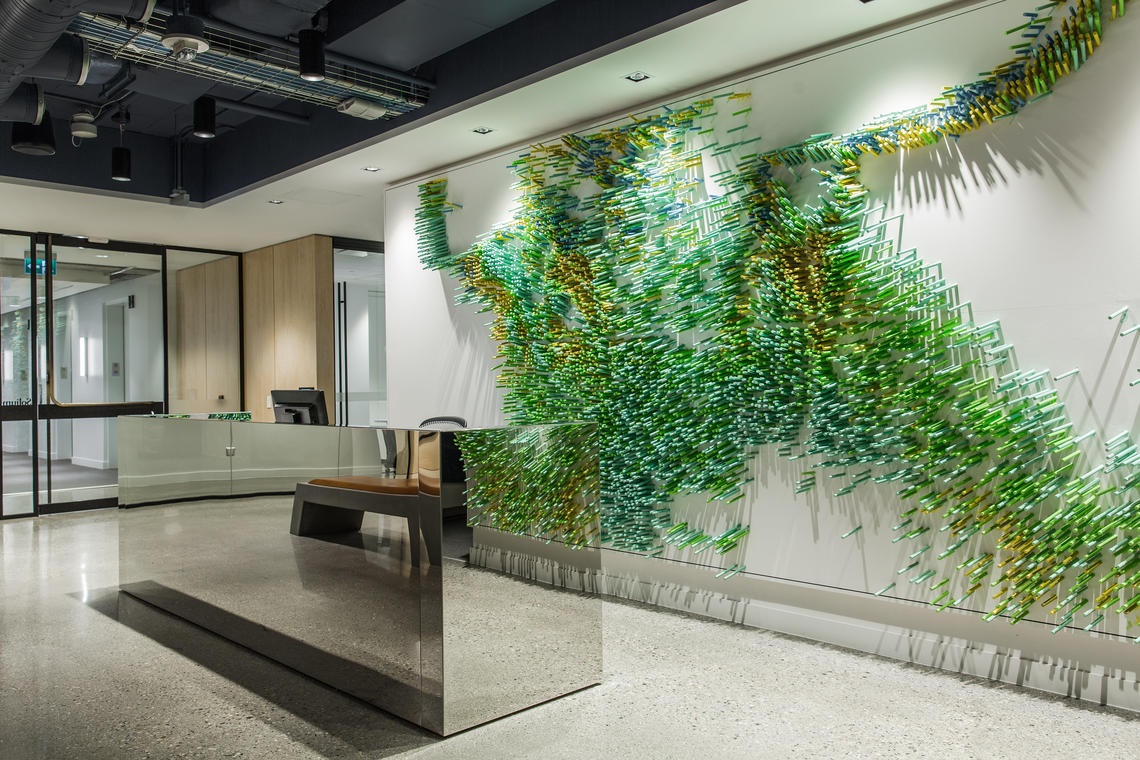Nov. 5, 2018
Digital analysis + design = award-winning sculpture

The Stock Wall, designed at the University of Calgary's Laboratory for Integrative Design.
Jamie Hyatt, for the Faculty of Environmental Design
You’ve probably never seen anything quite like it. Walk into the downtown Calgary office of Solium Capital, a software-as-service company, and you’ll encounter an astonishing wall sculpture: a sprawling, visually enticing display of movement and light.
The story behind the lively composition — titled Stock Wall — is a surprising blend of professional design, data analysis, and an artistic goal to capture the identity of the company. At the centre of the project is co-lead Guy Gardner, a Master of Environmental Design student at the University of Calgary, and his prof, Jason S. Johnson in the Faculty of Environmental Design.
Gardner presented the project during the 2018 ACADIA Conference hosted by the Universidad Iberoamericana Mexico City from Oct. 18 to 20, where he received a student scholarship award from the Association for Computer Aided Design in Architecture.
History of the project
Commissioned by architecture firm Mckinley Burkart, the Laboratory for Integrative Design (LID) in the Faculty of Environmental Design was asked to create a textured, shallow piece reflecting Solium Capital’s identity.
Solium offers a cloud-based software platform for managers of equity plans, which provide the means for employees to buy shares of private or public companies.
The design lab welcomed the commission. "These types of opportunities to engage in community-based research collaborations between faculty members and students form the core of the LID,” says Johnson, associate dean of architecture and co-director of the LID. “Our architecture students are uniquely prepared to contribute to these and other projects that combine innovative design thinking and cutting-edge technology."
Opportunity for the Laboratory for Integrative Design
The design for Stock Wall emerged as the lab examined sources such as images, patterns, and raw data taken from the history and environmental context of the company. The information was digitally reorganized in a generative way to create opposing effects: both blur and make familiar.
The result is an interdisciplinary exploration meant to engage viewer perspective and stimulate dialogue. The sculpture is a playful, organic digital work of art that plays with light and shadow while contributing to the identity of place, says Gardner.
Gardner completed his Master in Architecture in 2013 and is currently pursuing his Master of Environmental Design. He also teaches an advanced course on robotic fabrication as part of the architecture program.
